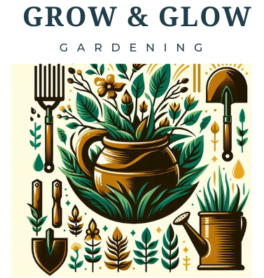Growing food in a raised bed already boosts productivity — but succession planting takes it to another level. Instead of waiting for one crop to finish before planting the next, succession planting helps you keep your garden productive every week of the season.
Whether you have a 4×4 bed, balcony bed, or a narrow cedar box, this method ensures continuous harvests, zero wasted space, and bigger yields.
What Is Succession Planting?
Succession planting means planting crops in stages, not all at once.
This gives you:
- Continuous harvests
- Fresher vegetables
- Better pest and disease resistance
- Efficient use of space
- Higher yields from the same bed
Instead of planting 20 lettuce plants at once, you plant 5 every two weeks — this ensures new harvests all the time.
Three Ways to Do Succession Planting in Raised Beds
1. Staggered Planting (Same Crop, Different Times)
Plant the same vegetable in intervals.
Example:
- Week 1: Lettuce row 1
- Week 3: Lettuce row 2
- Week 5: Lettuce row 3
This prevents everything from maturing at once.
Best crops:
- Lettuce
- Spinach
- Bok choy
- Radish
- Beans
2. Replace Finished Crops Immediately (Crop Replacement)
Once one crop is harvested, plant another in its place.
Example:
- Harvest radishes → plant carrots
- Harvest lettuce → plant bush beans
Never leave a bed empty — keep it producing.
3. Fast Crop + Slow Crop (Partner Pairing)
Plant a quick-growing crop beside a slow-growing one.
Example:
- Lettuce (fast) + Tomatoes (slow)
- Radish (fast) + Peppers (slow)
Fast crops finish early, leaving space for the slower crop to continue.
Succession Planting Chart for Small Raised Beds
| Crop | Days to Harvest | Succession Interval |
|---|---|---|
| Lettuce | 30–45 days | Every 2 weeks |
| Radish | 25–30 days | Every 10–14 days |
| Spinach | 35–45 days | Every 3 weeks |
| Bush Beans | 50–55 days | Every 3–4 weeks |
| Carrots | 60–75 days | Plant after fast crops |
Tips to Make Succession Planting Even Easier
- Use compost between plantings to refresh nutrients
- Keep seedlings ready in trays for fast replanting
- Choose fast-maturing varieties
- Track planting dates with a simple notebook or phone app
- Mulch after replanting to maintain moisture
Final Word
Succession planting is one of the easiest ways to turn a small raised bed into a year-round food machine. With a little planning, you’ll enjoy steady harvests and healthier crops — without needing more space.
Grow & Glow Garden Tips: core principles of this article are
1. Staggered planting: practice not to develop the ideas of planting everything at once.
2. Back-to-back planting: as you harvest one crop immediately start preparing to star planting next crop.
3. plants need: choose plants that is suitable for the climate season.
4. keep seeds on hand: You should always have seeds ready for next crop, even a small amount is better than having none.
Share your succession planting tips with us below in the comment section we love to hear yours!

